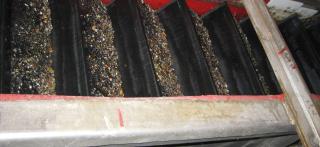
Tupelo Bayou WWTP protects Conway Lake, AR with help from Hydro International equipment
Complete grit removal and sludge screening solution protects and optimizes plant performance in Conway, Arkansas
Situation
An aging wastewater treatment plant had the potential to impact the water quality of a 6,700 acre man-made fishing lake near Conway, Arkansas. The city needed a new treatment facility that was consistent with pending permit limits.
The City of Conway, Arkansas has a population of around 66,000, and nearly 15,000 of those are students at Conway’s three colleges: Hendrix College, Central Baptist College, and University of Central Arkansas. In 2013, college enrollment was continuing to increase along with rapidly growing infrastructure needs of local manufacturing and technology companies. Due to their large industrial sector, in 2011, Forbes ranked Conway the 14th best city in America for young professionals as well as one of the best places for business and careers in 2012.
Lake Conway sits just southeast of downtown Conway, making it a big part of life for all Conway residents. The 8-mile (13 km) long lake has 52 miles (84 km) of shoreline and is the largest lake ever constructed by a state wildlife agency. Given the intense summer heat in Arkansas and the mild winters, the lake is a cornerstone for outdoor activity in Conway year-round.
Problem
The city had an aging wastewater treatment plant, the Stone Dam Creek WWTP, which discharged into Lake Conway. The 30-year old WWTP was a contributor to solids loading, directly impacting water quality at Lake Conway.
A 12-month study beginning in September 2011 commissioned by the Arkansas Game & Fish Commission indicated the lake had poor water quality ranging from “eutrophic to hypereutrophic based on chlorophyll-a and total phosphorous... [and that] Stone Dam Creek contributed 60-75% of the total load of phosphorus, orthophosphate, ammonia nitrogen, and nitrate+nitrite nitrogen.” 1
The nutrient contributions from the Stone Dam Creek WWTP were impacting the lake’s viability as an excellent fishery. The city was interested in protecting water quality in the lake that was such an important part of their community.
Located on the banks of the Arkansas River, the reliability of their proposed headworks system was paramount, making their grit system performance a critical selection criterion. It had to protect their downstream equipment and processes and help maintain basin volumes.
Solution
A new wastewater treatment plant was needed, so in 2012 construction began on the Tupelo Bayou WWTP. Built on an 80-acre greenfield site on the banks of the Arkansas River, this new plant would allow them to decommission the Stone Creek Dam WWTP and eventually replace another WWTP in the area.
Working with their engineering consultant, Garver, LLC, the City evaluated the performance, reliability, and durability of various manufacturer’s grit removal systems. Garver found that two Hydro International process trains each consisting of (1) 12’ (3.7 m) 12 tray HeadCell® stacked tray grit separation system, (1) 32” (0.8 m) SlurryCup™ high performance grit washing system, and (1) 2 yd3/hr (1.5 m3/hr) Grit Snail® quiescent grit dewatering escalator most closely matched the needs in this critical plant process.
Outcome
The new system provides total plant protection at 32 Mgal/d (121 MLD) at average flows and 60 Mgal/d (227 MLD) peak.
In addition to the required headworks, the plant also had an activated sludge treatment process with UV disinfection and an anaerobic sludge digestion complex that allowed them to use digester biogas for energy production.
By screening prior to digestion, the new Hydro-Sludge® Screen system has provided significant cost savings," said Bill Fulmer, Tupelo Bayou Plant Superintendent. "It reduces maintenance on the digester, pumps, and heat exchangers. The system also prevents trash from being land applied making it a more desirable product.
References
1. FTN Associates, Report Prepared for Arkansas Game & Fish Commission (2015). Craig D. Campbell Lake Conway Reservoir and Inflow Tributaries Water Quality and Sediment Study. (FTN No. R03017020-001). Retrieved from the Arkansas Department of Environmental Quality website: https://www.adeq.state.ar.us/water/planning/pdfs/ craig-d-campbell-lake-conway-reservior-and-inflow-tributaries.pdf
















